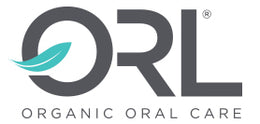You’ve already heard the basic tips for keeping your children’s smiles healthy—probably a million times over by now. But, what can you do when the basic advice like seeing the dentist regularly still leaves your kiddo with cavities or you can’t get them to brush no matter what you do?
On this page, we’ll break down the two biggest questions parents have: “How can I stop my kids from getting cavities?” and “What should I look for when choosing toothpaste for my kids?”
How Can I Keep My Kiddo Cavity-Free?
By age five, more than a quarter of kids will have had a cavity according to the National Institute of Dental and Craniofacial Research. By age 11, more than half will have developed one. Despite how common it is for kids to get cavities, however, it’s important to take steps to address cavities when they do occur and take preventative measures to avoid them. Use the tips below to set the stage for success.
Address cavities in baby teeth to protect permanent teeth.
NIH research shows some interesting disparities. Only about 8 percent of kids age 6-11 have untreated cavities in their permanent teeth. That means caregivers are quick to take action and protect adult teeth. However, more than 20 percent of kids have untreated cavities in their baby teeth.
That’s a major disconnect. While there may be other underlying factors in these figures, the data suggests caregivers don’t respond as swiftly to cavities in baby teeth as they do to cavities in permanent teeth. That’s concerning because research shows:
- Kids with cavities in their baby teeth have a much higher risk of getting cavities in their adult teeth due to higher bacterial activity and vulnerability of the adult teeth.
- Cavities in any tooth can be quite painful!
- Kids with cavities experience more weight gain than their counterparts.
- Cavities impact the psychological well-being of children.
With that in mind, the best thing caregivers can do to keep a child’s smile healthy for life is to start at a very early age and care for baby teeth with the same level of consideration adult teeth receive.
Supervise and coach.
There’s nothing cuter than a tot wiggling a toothbrush around in their mouth and demonstrating what they’ve learned, but kids don’t actually have the dexterity and ability to thoroughly brush their own teeth until about age six. It’s good for kids to brush their own teeth before then for the practice, but a caregiver should always do a round of brushing after.
Once kids can brush on their own, they still need a grownup checking in. Start by watching your kiddo brushing to make sure they’re brushing long enough and hitting every area of their mouth. Once they’re doing it consistently on their own without your help, it’s still a good idea to do periodic spot checks of their brushing to ensure they’re maintaining the good habits you’ve taught them.
Find tools they can use.
Adult-sized oral care tools are too large and cumbersome for kids to use properly, so stick to pint-sized brushes and interproximal cleaners that fit little hands and mouths properly. You’ll find brushes for each stage, including those for babies, toddlers, young children, and older kiddos.
It’s also worth noting floss is optional, but cleaning between teeth is not. With that in mind, you can choose from a variety of tools, including kid-friendly flossers, floss picks, interproximal brushes, and more. Some will say not to worry about cleaning between teeth at all when kids are little because baby teeth tend to be farther apart and don’t usually touch. If that’s true for your little one, you can probably just focus on good brushing. However, it’s important to remember that you’re establishing lifelong habits now. If your kiddo isn’t accustomed to taking extra steps to clean between their teeth now, it’s going to be harder to get them to do it later.
Make it fun.
According to the American Dental Association (ADA), the average adult only brushes for 45 seconds. If we can’t brush for the full two minutes we’re supposed to, it’s hard to imagine kids are doing any better. A few things you can do to extend brushing time:
- Watch a video on a phone or tablet while brushing.
- Brush outside of the bathroom, perhaps while reading a bedtime story or wrapping up a TV show. (Choose fluoride-free toothpaste if you’re using this method to avoid ingesting fluoride.)
- Hum a favorite song or turn humming into a game where you try to guess what the other person is humming.
- Set a timer.
- Create a reward chart for good brushing habits.
Use xylitol.
Few people are familiar with xylitol, but it’s a powerhouse in oral health care. Xylitol is a sugar substitute, so it’s often included in things like sugar-free bubblegum. What makes it unique is that the bacteria responsible for tooth decay can’t digest it. When they try, they essentially starve to death. This reduces the risk of decay on its own, but xylitol’s unique properties have actually been shown to inhibit biofilm too. That means you’ll have less plaque buildup when you use it because the bacteria can’t adhere to your teeth.
Mind the pH.
We talk a lot about the benefits of 7.0 pH in oral health. The short version is that anything below 7.0 is acidic and anything above is basic. When your mouth is acidic, which is what happens when it’s teeming with bacteria and after you eat many different types of foods, minerals start to leave your teeth. Known as demineralization, this process leaves teeth susceptible to decay.
However, researchers have found that when pH becomes balanced, the demineralization process stops, and teeth naturally remineralize on their own. That’s another reason why xylitol works to safeguard smiles—it kills acid-causing bacteria. At ORL, we also make sure all our products are perfectly pH balanced as a way to hit the “reset” button in your mouth each time you brush too.
Aside from choosing pH-balanced products, you can take steps to neutralize acids throughout the day. For example, if your kiddo has an acidic beverage or food, have them rebalance right after. (We give more tips in our article about brushing before and after coffee.)
Lead by example.
Kids aren’t born with cavity-causing bacteria in their mouths, but by about 18-months-old, around 20 percent will have Streptococcus mutans. Prevalence increases from there. Unfortunately, that means most cavities can actually be tracked all the way back to well-intending parents sharing food and beverages with their kids and passing on their own bacteria in the process. Research shows most families share the same bacterial profiles for this reason. It’s hard to avoid when you’re living in close quarters and dining together.
That means one of the best things you can do for the kids in your life is to take care of your own oral health. Of course, they’ll pick up your habits by watching you too. Consider turning brushing into a family affair or at least make sure they see you brushing so they follow suit.
What Should I Look for in Toothpaste for Kids?
The FDA warning on fluoridated toothpastes recently began circulating the net again and causing alarm among parents. Companies that include fluoride are required to include the exact phrasing:
Warning
Keep out of reach of children under 6 years of age. If more than used for brushing is accidentally swallowed, get medical help or contact a Poison Control Center right away.
This wording is naturally quite concerning for caregivers to read, but the reality is all toothpaste manufacturers that include fluoride (which is anything with the ADA seal) are supposed to be including this on their packaging. Most parents should be familiar with it. However, companies try to comply without upsetting parents by tucking the required warning on the back of the package and using small print.
This is only one strategy researchers note manufacturers use to downplay the risk or confuse kids and parents. In a review of 26 formulations for kids, they discovered more than a quarter depicted a brush full swirl of toothpaste—something that contradicts the recommendation of using a pea-sized amount to minimize fluoride ingestion. Around half include pictures of food as well, which sends a subconscious signal that a product is edible and increases the likelihood it will be eaten.
We won’t go so far as to suggest you should avoid fluoride, but if you’re one of the many parents concerned by these things, you may feel better if your child is using fluoride-free toothpaste and mouthwash. A few other general guidelines on what to look for are covered below.
Nourishing ingredients.
Again, teeth naturally remineralize when the environment is right and minerals are present. Choose products that contain the building blocks of healthy teeth, like calcium. It’s also a good idea to avoid harsh ingredients like alcohol that can dry out tissues.
If you’re not sure what harmful ingredients are lurking in your child’s toothpaste, use our Compare Tool to find out.
Absence of harsh abrasives.
Baby teeth have thinner enamel, so it’s important to protect them as much as possible. Many toothpastes include harsh abrasives as a means to scrub away stains, but they can actually damage enamel, especially if kiddos are brushing right after their bedtime snack when the enamel is softer due to the acidic environment. For this reason, it’s best to stick with toothpaste designed for kids and read the label to find out if harsh abrasives are used.
Palatable flavor.
Finding the right flavor profile for kids is difficult. On one hand, you want the toothpaste to taste good, so kids are happy to use it. However, you don’t want it to taste so good that it gets mistaken for food. This is one of the many reasons we determined natural bubblegum flavor was the right choice for ORL toothpaste for kids. Little ones literally describe it as “Yum!” but are less likely to confuse it with food since bubblegum is not intended to be eaten.



